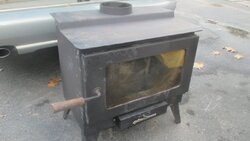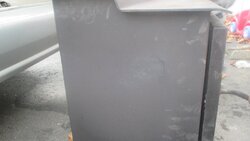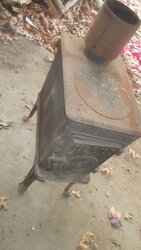We have a tiny fireplace that we wanted to put a small wood stove into. Our choices were limited because of the size. Wood stove will be mainly used for heating our living room, we do not have a open floor plan. I bought a Reginald 101 (similar to the Jotul) because of the size. Then i was given a Trailblazer 1700. The wife and kids cant stand the Reginald looks. My only issue is that the Trailblazer has some weird small crack on both sides where there is some tubes with tiny holes in them welded to the interior. The people it came from used it for years here and there. Would it still be safe to use?
Which would put out the better heat? Living room is 12X20.
Im completely new to Wood Stoves, thank
s.


Which would put out the better heat? Living room is 12X20.
Im completely new to Wood Stoves, thank
s.





 . How much can you get for a stove scrap?
. How much can you get for a stove scrap?